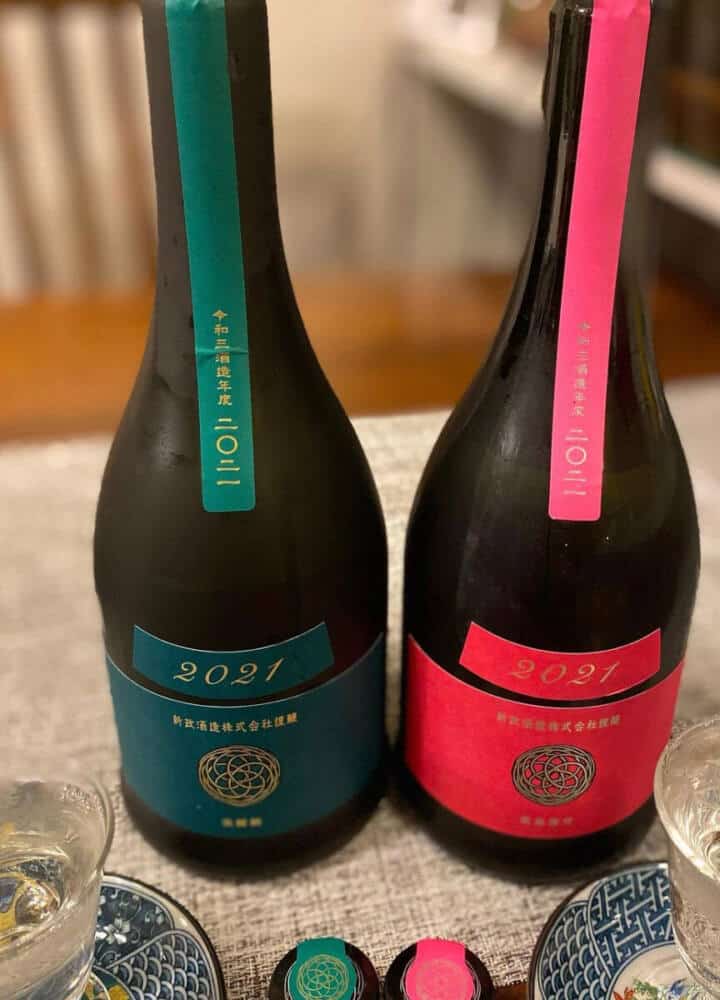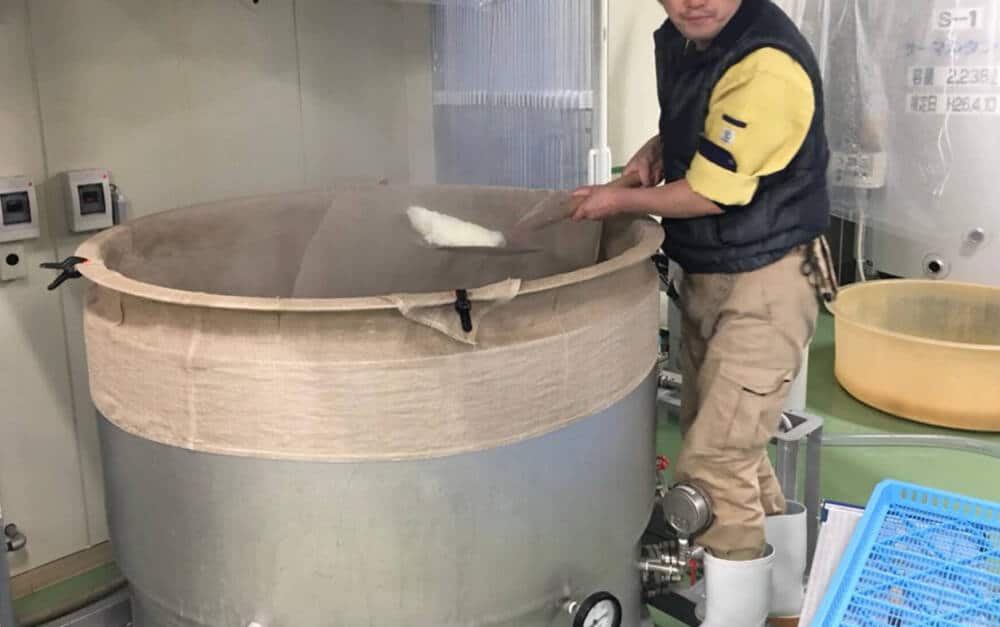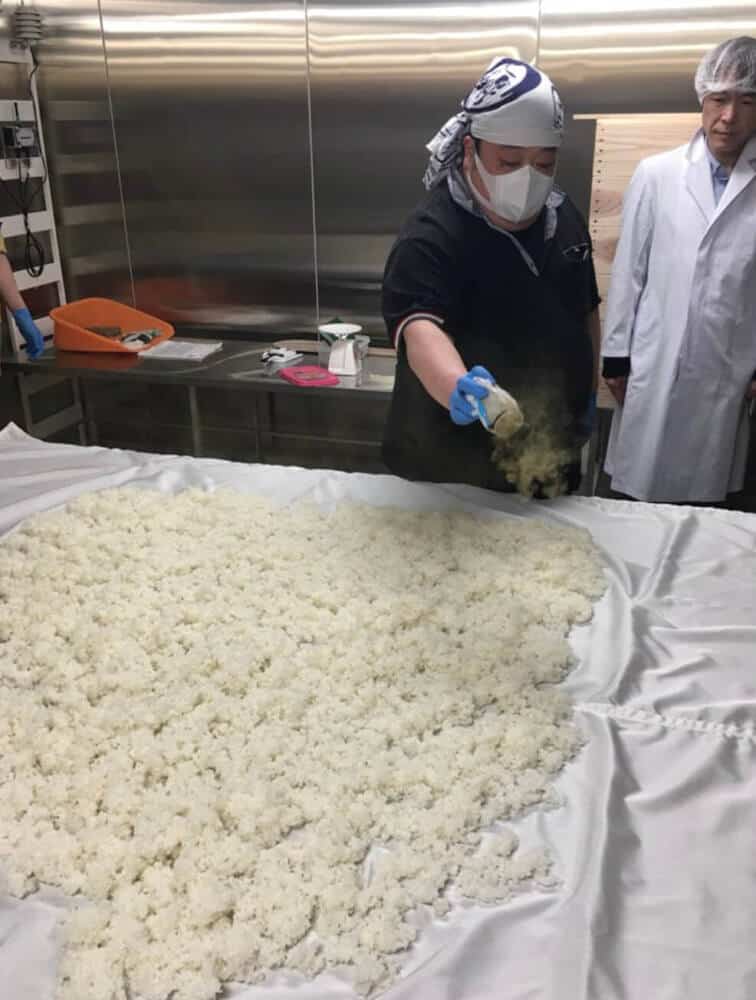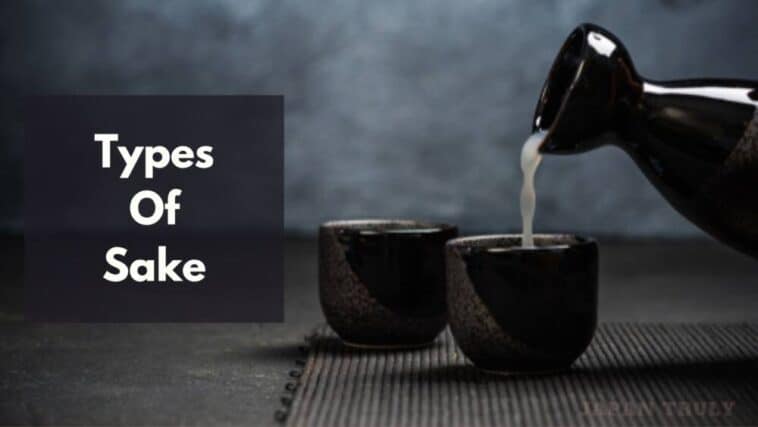Want to try the best sake in Japan? Here are the different types of Sake in Japan that youc an choose from. Check it out!
Sake is a type of fermented alcoholic beverage that has been popular in Japan for centuries. Originating in the Nara period of the 8th century, it has had time to develop into a variety of types, each with its own distinct flavor and taste.
Junmai-shu, Ginjo-shu, Daiginjo-shu, Honjozo-shu, and Namazake are are the main types of sake in Japan.
In this article, we will discuss the difference between each kind and how it adds a unique complexity to the flavor of this beloved beverage.


Sake has been a source of great delight to the people of Japan for centuries. The five varieties of sake have allowed it to enjoy an incredibly versatile flavor profile, giving drinkers options to choose from to suit their own personal palate.
Of these types, Junmai-shu, Ginjo-shu, Daiginjo-shu, Honjozo-shu, and Namazake are some of the most popular. We will explore each one and discuss the subtle nuances that separate them from one another.
Page Contents
Types of Sake
Sake, or Japanese rice wine, is an iconic drink that has been around for centuries and is usually savoured as an accompaniment to meals. It is a very versatile beverage, and comes in several different varieties, each with its own unique flavour.
The main types of sake include: Junmai-shu, Ginjo-shu, Daiginjo-shu, Honjozo-shu and Namazake.
Junmai-shu

Junmai-shu is made from rice, water and the koji fungus, and is generally regarded as the most common and traditional type of sake. It is characterised by its earthy, full-bodied flavour, and is relatively strong when it comes to Alcohol by Volume (ABV).
Ginjo-shu
Ginjo-shu is a type of sake made with more premium ingredients, and is usually lighter and smoother in flavour than junmai-shu.
Daiginjo-shu
Daiginjo-shu is an even more refined sake, made with even more premium ingredients, and is the most expensive type of sake due to its complex, fruity flavour.

Honjozo-shu
Honjozo-shu is a milder type of sake that is usually used for everyday drinking. This type is typically made with a bit of distilled alcohol added to the mixture, which helps lessen the flavour of the rice and create a lighter, more refreshing drink.
Namazake
Namazake is a type of sake that has not been pasteurised, giving it a brighter and more fragrant taste. It is more delicate than other types of sake, and has to be stored and kept chilled at all times.
No matter which type of sake you choose, you’re sure to find a sake that you love. So why not try a few different varieties and explore the unique flavour each has to offer?
- Related: All ABout Awamori Island Sake
History and Origins Of Sake In Japan
The gleaming, ethereal taste of sake has extended its history through cultures, religions, and dynasties. It has a more distant history that accounts for the roots of rice agriculture in Asia, with the rice grain as its main ingredient.
For centuries, sake has been celebrated for its refreshing flavor and often, for its symbolism of celebration and customary ritual.
Origin stories vary as across different cultures such as Japan, China, Korea, Vietnam and even Western cultures.
During the Edo period (1603-1868), the sake brewing industry underwent a major industrial revolution with the five major sake brewing styles being established – Junmai-shu, Ginjo-shu, Daiginjo-shu, Honjozo-shu, Namazake.
These formulas are used to this day and are hugely popular in Japanese restaurants and retail stores.
Junmai-shu is a premium symbolic sake with a higher content of rice, malt and water than usual.
Some would argue it is an expression of the traditional flavors of sake. Ginjo-shu is produced using a special method using modern technology and advanced techniques to preserve the freshness and quality of the drink.
Daiginjo-shu is the pinnacle of premium sake with a more fragrant aroma and flavor profile. Honjozo-shu showcased a more mellow flavor that is easy for beginners to enjoy. Namazake is unpasteurized sake in its natural form, which offers a more vibrant flavor.
Sake’s history and cultural roots are deep and entrenched. What began as a simple beverage crafted from natural ingredients has the potential to be transformed into something sublime, making it one of the most treasured libations in the world.
- Related: Best Japanese Sake Brands
Health Benefits of Drinking Sake
Sake, or Japanese Rice Wine, has been consumed in Japan for millennia and is believed to have a range of health benefits. It is naturally gluten free, low in sugar, and contains minerals and amino acids that are beneficial to the body.
According to research from the Harvard School of Public Health, moderate consumption of sake can contribute to a healthy lifestyle. Here are a few of the potential health benefits, specific to drinking different types of sake.
Junmai-shu sake is known for its rich flavor and it has demonstrated strong antioxidant properties. It also boosts energy levels, and is believed to help improve circulation, making it a refreshing and energizing drink.
Ginjo-shu is a premium sake, with a smoother and more complex flavor. This sake increases metabolism, thanks to its higher concentration of amino acids. It can also help the body processes vitamin B, a crucial element to keeping your energy levels up.
Daiginjo-shu is a more premium type of sake. It aids digestion, helps reduce stress levels, and can even help compensate for some of the gluttony one may indulge in throughout the day. The unique flavor of Daiginjo-shu helps to relax the body and ease tension.
Honjozo-shu is a sake with a stronger flavor and the highest alcohol content. While this can be dangerous if consumed to excess, moderate consumption can help reduce inflammation, providing a healthier and safer alternative to NSAIDs.
Finally, Namazake, a type of unpasteurized sake, is full of probiotics that are beneficial for gut health. These probiotics help support the body’s defense system, aiding in digestion and providing a lasting sense of well-being.
So, next time you reach for a bottle of sake, remember that you aren’t just having a fun drink, you’re also deriving a range of health benefits. Now that’s something you can raise a glass to!
Sake Brewery Process in Japan
The process of brewing sake is an incredibly intricate and methodic process. Sake recipes are unique to each brewery and are developed over hundreds of years.
A traditional sake brewery procedure usually consists of four components: rice polishing ratio, koji-making, fermentation, and pressing.
Rice polishing ratio refers to how much of the surface of the rice has been polished away. Polishing the rice helps to remove impurities from the grains, which will in turn produce a cleaner-tasting sake.
The most common types of sake are Junmai-shu, which uses a polishing ratio of 70%; Ginjo-shu which has a polishing ratio of 60%; and Daiginjo-shu which has a polishing ratio of 50% or less.

Koji-making is the process of fermenting the rice with koji mold, yeast, and lactic acid bacteria. This process helps to break down the starch content in the rice and prepares it for fermentation. It also imparts a unique, sweet aroma to the sake during the brewing process.

Fermentation is a crucial step, as it assists in developing the sake’s rich and complex flavor. During this step, the enzymes in the koji break down the maltose sugars in the rice and release amino acids, which provide taste and aroma elements.
The amount of time that the sake spends in this process will also affect the flavor intensity.
Last, but not least, is the pressing, which is the process of extracting the liquid from the sake lees, or residualsolids. Depending on the type of sake, Honjozo-shu and Namazake are examples of pressed sake.
It’s truly remarkable the amount of skill and patience it takes to craft sake. The resulting composition of each individual brew is truly distinct and makes the sake-brewing process an art form.
Serving and Enjoying Sake
Sake has been enjoyed for centuries, marking the occasions that bring people together. Not to be mistaken as a wine, sake is an alcoholic beverage made from fermented rice and is traditionally served in Japan.
Depending on the type of sake, the serving temperature and manner of drinking can vary. While it can be served cold, warm sake brings out the nuances in flavor that many connoisseurs appreciate.
In Japan, Junmai-shu is one of the most commonly served types of sake. This type of sake is created with only rice and water, giving it a crisp flavor and lower alcohol content.
Enjoyed standardly at room temperature, Junmai-shu is best savored slowly to appreciate its sweet aroma.
Ginjo-shu is a much more refined type of sake, made with more polished rice and brewing techniques. The elegant taste of this sake parallels its scent and impeccable visual clarity, leading to a smoother finish on the palate.
Serve carefully at a lower temperature, allowing the subtle nuances of its subtle aroma to be fully appreciated.
A step above Ginjo-shu is Daiginjo-shu, an especially refined type of sake. Experience the incredible taste of this elixir as temperatures ranging from a dimly lighted room temperature to almost icy are all recommended.
This sake will be revealing its secrets at temperatures between 10 and 16 degrees Celsius, allowing the complex flavor to awaken its senses.
Honjozo-shu is unique to its classification. The process of making this type of sake includes using minimal amounts of brewers’ alcohol for added flavor.
Compared to other types of sake, Honjozo-shu has a distinctive crispness, along with full body and richness.
Lastly, Namazake is a type of sake that is best enjoyed freshly brewed and stored unpasteurized. This type of sake is more difficult to find, but its lively flavor has a vibrant and smooth texture that gives it a unique appeal.
Enjoy this special sake chilled or slightly warmed to have the best flavor profile.
Regardless of type, sake brings out the best in any occasion and to be savored and appreciated.
From the popular Junmai-shu to the exquisite Namazake, each drink is unique and should be enjoyed the way that brings out the best in each person’s individual experience. Enjoy!
In conclusion, there is a variety of sake that can satisfy anyone’s taste. Junmai-shu, Ginjo-shu, Daiginjo-shu, Honjozo-shu and Namazake are all incredibly unique and diverse styles of sake, offering a wide range of flavors, aromas and alcohol content.
Whether you are looking for a light drinking sake or something more intense and flavorful, these types of drinks have something for everyone. So, if you’re looking for something new and unique, look no further than the exciting and versatile world of sake.
Also Read
My writing focuses on the various aspects of Japanese lifestyle, from traditional tea ceremonies and flower arrangement to modern fashion trends and pop culture. Through my articles, I aim to share my passion for Japan and provide readers with a glimpse into the rich and diverse world of Japanese culture.
I believe that the key to understanding Japanese lifestyle is to appreciate the balance between tradition and innovation. While Japan has a rich cultural heritage that dates back centuries, it is also a country that is constantly evolving and embracing new ideas and technologies.
Whether you’re interested in learning about the latest fashion trends in Tokyo, or want to explore the ancient art of calligraphy, my writing will take you on a journey through the many facets of Japanese lifestyle. So join me as we explore the beauty and complexity of this fascinating culture together!





